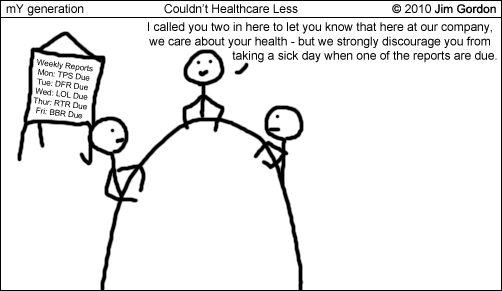|
|
|
December 22nd, 2017 by Muema Lombe
 AMAZING! Health 2.0’s Precision Health Summit was an absolutely amazing event focused on the future of health, highlighting how technology and big data are transforming healthcare. AMAZING! Health 2.0’s Precision Health Summit was an absolutely amazing event focused on the future of health, highlighting how technology and big data are transforming healthcare.
Health 2.0, the conference organizer, is a digital health media company, and in addition to its signature event in Santa Clara, has run conferences in Europe, Latin America, India, Japan and more. The Technology for Precision Health Summit delivered.
I arrived at the summit, was greeted by Joan Hwang of their Marketing and PR team and obtained my badge. I took the elevators to the 15th floor and sat at tables with health professionals, researchers, venture capitalists and healthcare entrepreneurs.
The second session, Precision Medicine Pt. 2 – Underlying Technologies Enabling Precision Medicine and Precision Health, perked me up, where I learned that Redox is building an API for healthcare. Genius!
The New Diagnostic Screening Tools and Predictive Analytics – Oncology and Beyond panel was FANTASTIC! For me, one of the highlights of the conference were the live demos by healthcare companies.
I was super impressed by Color, Helix and Kenzen. Here’s why.
Color offers affordable genetic testing to help understand your risk for common hereditary cancers & hereditary high cholesterol. Pretty amazing if you think about it.
Helix, founded by a former VC, blew us away. Think of a app store for DNA testing. Using DNA, you can discover your ancestry, slumber habits and more. Welcome to the future: now.
Hands down, my personal favorite was Kenzen. Kenzen uses sweat analysis and continuous health monitoring to help you get ahead of injuries and avoidable health conditions. Imagine a wearable that provides real time feedback, infinitely more powerful than FitBit or the Apple Watch. INCREDIBLE.
This conference is one of the best I’ve attended. As a tech professional, I’ve attended many tech conferences. The Technology for Precision Health Summit was focused, drove excellent conversations on the future of health, showcased healthcare startups leveraging technology as a differentiator and highlighted the importance of data collaboration in order to address today’s health challenges.
In my experience, a culture of collaboration both intra-company and industry wide, leads to greater outcomes for all.
This conference should be attended by every healthcare professional concerned about the future of health and every venture capitalist looking for new platforms to deploy capital.
This is the place to view demos, learn how startups are creating Health 2.0 and understand how to partner with these companies.
I highly recommend the Technology for Precision Health Summit and look forward to their next conference!
Image credit: Health 2.0
Tags: conferences, Health 2.0, health insurance, Healthcare
Posted in Entrepreneurs, Innovation |
No Comments »
Sphere: Related Content
*/?>
November 6th, 2014 by Miki Saxon
If any consumer industry is ripe for disruption it’s healthcare—not just its recordkeeping.
Yet it would be hard to find any industry in which the established players are more resistant or just plain obstructive.
But thanks to people such as Elizabeth Holmes, founder of Theranos, and Dr. Isaac Yonemoto, founder of open-source IndySci, real disruption is happening.
Eleven years ago at 19 Holmes decided that she would spend her Stanford tuition on changing the healthcare status quo, which she did by upending one of the oldest, most expensive, completely ubiquitous, and least changed diagnostic tools—blood testing.
The new tests can be done without going to the doctor, which saves both money and time. Most results are available in about four hours, which means that you could swing by a pharmacy and have a test done the day before a doctor’s visit, and then the results would be available for the physician.
Each test costs less than 50% of standard Medicare and Medicaid reimbursement rates. If those two programs were to perform all tests at those prices, they’d save $202 billion over the next decade.
As an example of how helpful that can be, Holmes told Wired that Theranos charges $35 for a fertility test, which is usually paid for out-of-pocket and costs up to $2,000.
Those who aren’t partial to needles and vials of blood (most of us) should note that the Theranos test requires only one drop of blood from a prick of the finger.
Last year the company cut a deal with Walgreens to roll out Theranos Wellness Centers inside each of its 8000-plus pharmacies.
Dr. Isaac Yonemoto is used crowdfunding (campaign ended October 28) to finance Project Marilyn to create open sourced, patent-free cancer drugs.
The global market for these drugs surpassed $1 trillion this year. The average monthly cost of a brand-name cancer drug in the U.S. is about $10,000, according to the IMS Institute for Healthcare Informatics. (…) “The big picture is we’ll be trying to solve the problem of expensive pharmaceuticals by releasing drug candidates that put downward pressure on price through competition.”
Elizabeth Holmes’ one-drop blood test is the start of true disruption and if Dr. Isaac Yonemoto’s Project Marilyn is even half as successful as Linus Torvalds’ Linux they will change the face of medicine and the pharmaceutical industry forever.
Tags: disruption, disruptive innovation, Healthcare
Posted in Entrepreneurs, Innovation |
No Comments »
Sphere: Related Content
*/?>
October 10th, 2010 by Jim Gordon
 See all mY generation posts here. See all mY generation posts here.
Tags: mY generation
Posted in mY generation |
No Comments »
Sphere: Related Content
*/?>
September 22nd, 2008 by Miki Saxon
I’ve written a number of posts abut the lack of leadership in healthcare and the resulting problems with links to useful articles. I’ve even managed to discuss them relatively calmly and sans four-letter words—or at least edited them out. (My focus isn’t surprising, since I’m one of the 47 million uninsured.) Three new articles prompt today’s post. Three new articles prompt today’s post.
The first was an article, including multiple links to additional information, at Health Care Renewal by Roy M Poses MD. It shines a light on just how little unethical and/or illegal actions impact a career these days.
On September 10th, according to Bloomberg, “UnitedHealth Group Inc.’s former chief executive officer William McGuire agreed to pay $30 million to settle a lawsuit brought against the company and individual defendants over backdated stock options.” But don’t waste your sympathy on Mcguire, who still has around $800 million in stock options to fall back on.
On September 11th, “the Minneapolis Star-Tribune reported Stephen Parente, director of the Medical Industry Leadership Institute in the Carlson School of Management said the school had given him the go-ahead to explore the idea [to be “executive in residence”] with McGuire, former chief executive of Minnetonka-based UnitedHealth Group… “We don’t really care about the stock options.””
How’s that for a great leadership stance?
On September 18th, The Star-Tribune reported that the University of Minnesota is disavowing any plans to make McGuire a faculty member.
Looks like someone with at least a half a brain figured out that having an ethically challenged “executive in residence” wasn’t a good idea.
The second highlights yet another onerous practice of healthcare providers called “balanced billing”—only this one’s often illegal.
“Balance billing most frequently occurs when medical providers participating in a managed-care network believe the plan’s insurer is imposing too deep a discount on medical bills or is taking too long to pay. California, New Jersey, and 45 other states ban in-network providers from billing insured patients beyond co-payments or co-insurance required by the plan. Similarly, federal law prohibits providers from billing Medicare patients for unpaid balances… Many states also shield insured patients from balance billing by out-of-network hospitals and doctors in emergencies, since patients usually don’t control who treats them in those situations.”
Illegal or not, when collectors threaten to trash your credit people pay up. Better to call your State’s Attorney General and scream bloody murder. And if you’re unfortunate enough to live in one of the five states where it’s not illegal maybe you’d better get your network together and lobby for a change.
The third brings us to a new take on managed care.
“Consider what is happening in New England. Blue Cross Blue Shield of Massachusetts, that state’s dominant insurer, and financially struggling Caritas Christi Health Care, its second-largest hospital network, want to switch from a system that charges patients for every medical service to a managed-care-like flat fee per patient. The yearly fee would be adjusted for age and illness…
According to Dr. Stuart Rosenberg, head of a group of 1,400 doctors at Beth Israel Deaconess MedicalCenter in Boston, “70% of U.S. doctors who are specialists would be loath to enroll in a system that emphasizes primary care.
At least a third of those trillions is wasted on unnecessary care, according to the nonprofit Dartmouth Institute and other researchers, and medical experts blame widespread fee-for-service plans. These encourage volume over quality—doctors and hospitals have a financial incentive to perform more and more tests and operations whether they’re needed or not.”
Will it be better? Who knows, but at least they’re trying.
Consistent through all the problems, as well as the barrier to potential solutions, is the MAP (mindset, attitude, philosophy™) of greed and mememe that permeates our society.
In fact, that MAP is the one constant thread I see tying together the debacles on Wall Street, in healthcare, education, religion and a host of other problems.
Your comments—priceless
Don’t miss a post, subscribe via RSS or EMAIL
Image credit: forwardcom CC license
Tags: balanced billing, Dr. Stuart Rosenberg, managed care, primary care, Roy M Poses MD, unitedhealth group, william mcguire
Posted in About Leadership, Ethics, Healthcare, Leading Factors, What Do You Think?, What Leaders DON'T |
No Comments »
Sphere: Related Content
*/?>
August 11th, 2008 by Miki Saxon
 Awhile back I wrote several posts (rants?) on healthcare problems and some of the really terrible things that make my blood boil. Awhile back I wrote several posts (rants?) on healthcare problems and some of the really terrible things that make my blood boil.
Over the last couple of weeks several new article caught my eye and I wanted to bring them to your attention.
1. Following up a February post on doctors and medical researchers extensive conflicts of interest resulting from pharma industry funding and gifts.
Amazingly enough, two industry giants, Pfizer and Zimmer, which manufactures hip, knee, and elbow implants, are concerned about a potential conflict—although not about funding or gifts. This one is about ongoing physician education, often funded by industry players.
“At the center of this controversy are medical communications firms paid by pharmaceutical and device companies to produce physician-education courses. Critics say the manufacturers hire the marketing firms as intermediaries to help them influence doctors’ prescriptions and procedures.”
Gee maybe all the articles, investigations and general negative publicity coupled with a consumer revolt that might force action in Washington are having an effect.
2. It’s disgusting that financial institutions buy the debt of the un/under insured and then charge exorbitant interest rates on it.
Now the light is being shined on a practice that drives one more nail to the inability to buy insurance—assuming that you can even afford it.
“An untold number of people have been rejected for medical coverage for a reason they never could have guessed: Insurance companies are using huge, commercially available prescription databases to screen out applicants based on their drug purchases. … Most consumers and even many insurance agents are unaware that Humana, UnitedHealth Group, Aetna, Blue Cross plans, and other insurance giants have ready access to applicants’ prescription histories. These online reports, available in seconds from a pair of little-known intermediary companies at a cost of only about $15 per search, typically include voluminous information going back five years on dosage, refills, and possible medical conditions. The reports also provide a numerical score predicting what a person may cost an insurer in the future.”
3. We all know how important it is to wash our hands, but many of us are careless about doing it—including healthcare providers.
“Despite recommendations, nearly 60 percent of health-care workers do not wash hands while on duty. … Why? … For one thing, rigorous hand washing is time-consuming. Guidelines advise that we first rinse, then soap for 20 seconds, then rinse again for 30 seconds; after this, we paper-dry our hands and turn the faucet off using the paper towel. For health-care workers, the procedure is supposed to be followed before and after every patient encounter. That means two minutes per patient visit, which adds up to an hour for a doctor who sees an average 30 patients a day, and 2 1/2 hours per shift for an ICU nurse.”
Now, in an effort to force improvement, “Starting in October, hospitals will be penalized for the consequences of unwashed hands: Medicare will no longer pay for complications arising from certain hospital-acquired infections, which in many cases result from poor hand hygiene. This will be a powerful incentive for health executives to improve hand-washing compliance.”
Will it be an incentive? Or will the hospitals just bill the patient for what Medicare doesn’t cover and then sell the receivables to the highest bidder?
4. A possible bright spot—at least for those who work in large companies. It’s on-site medical clinics driven by the very best motivator—vested self-interest.
“[Toyota’s] medical center, which cost $9 million to build in 2007, could save the company many millions over the next decade. Managed by Take Care Health Systems whose business is running medical clinics, the program has helped Toyota slash big-ticket medical items including referrals to highly paid specialists, emergency room visits, and the use of costly brand-name drugs. Plus, there are big productivity gains because workers don’t have to leave the plant and drive to a doctor’s office for routine medical matters. … A recent study by benefits-consulting firm Watson Wyatt Worldwide found that 32% of all employers with more than 1,000 workers either have an on-site medical center or plan to build one by 2009. “We’re talking about a microcosm of health-care reform,” says Hal Rosenbluth, president of Walgreen’s health and wellness division. “Companies can take control and understand their health-care costs.””
In spite of a few bright spots, I honestly believe that the state of healthcare in the US is a mark of shame on the global stage.
What do you think?
Your comments—priceless
Don’t miss a po0nst, subscribe via RSS or EMAIL
Image credit: miqueias CC license
Posted in Ethics, Healthcare, Politics, What Do You Think? |
No Comments »
Sphere: Related Content
*/?>
April 5th, 2008 by Miki Saxon
Post from Leadership Turn Image credit: dimshikSorry, I forgot to mention this in the previous post.
I’ve recorded a lot of shows over the years and when I want some company for what I’m doing I pop one in my VCR.
 I was watching one recently and realized that there wasn’t even one drug commercial during the entire two hours. It was great. I was watching one recently and realized that there wasn’t even one drug commercial during the entire two hours. It was great.
These days, drug companies spend more than $6 billion a year on direct-to-consumer (DTC) advertising.
I prefer the thrilling days of yesteryear when there was a ban on DTC drug ads, but alas, Congress ditched it.
However, DTC is a real bone of contention for the FDA.
What do you think about drug advertising?
Your comments—priceless
Don’t miss a post, subscribe via RSS or EMAIL
Posted in Ethics, Healthcare, Politics, What Do You Think? |
No Comments »
Sphere: Related Content
*/?>
April 5th, 2008 by Miki Saxon
Post from Leadership Turn Image credit: arte_ram
As most of you know I’ve been writing a series on healthcare, linking to articles detailing the actions of doctors/healthcare professionals, insurance companies and financial institutions. What’s ahppening as opposed to political retoric of what should happen.
But last night I got to thinking.
The stuff the artilces describe isn’t new, it’s been going on for years. Sure, some are new wrinkles, but in general it’s all been around for quite a while.
Why suddenly all these articles? Why is the light being shown and the rocks turned over? What’s different?
Because it’s an election year? Unlikely, this stuff was going on four years ago, but there were no exposés about medical staff not washing their hands or drug companies financial involvement with doctors starting while they’re still in medical school.
So what’s new? What do you think has changed? What’s going on?
Your comments—priceless
Don’t miss a post, subscribe via RSS or EMAIL
Posted in Ethics, Healthcare, Politics, Thinking Out Loud, What Do You Think? |
No Comments »
Sphere: Related Content
*/?>
April 4th, 2008 by Miki Saxon
Post from Leadership Turn Image credit: Xurble
If it’s not doctors ripping off Medicare it’s disability insurers jacking up Social Security’s overhead in the name of increasing their profits.
 According to the New York Times, “The Social Security system is choking on paperwork and spending millions of dollars a year screening dubious applications for disability benefits, according to lawsuits filed by whistle-blowers…The insurers are forcing many people who file disability claims with them to also apply to Social Security — even people who clearly do not qualify for the government program.” According to the New York Times, “The Social Security system is choking on paperwork and spending millions of dollars a year screening dubious applications for disability benefits, according to lawsuits filed by whistle-blowers…The insurers are forcing many people who file disability claims with them to also apply to Social Security — even people who clearly do not qualify for the government program.”
The insurance companies use the simplest, tried-and-true approach around to ‘force’ the applications—threatening to or actually cutting off benefits.
How great is the cost?
“…it costs $1,180, on average, to process a single Social Security disability application to the first decision, usually a rejection. If the applicant persists through the first three levels — the initial review, a reconsideration and a hearing by an administrative law judge — the case will cost the system an average of $4,759″
Insurance companies refer 2.5 million disability applicants a year; considering just the basic processing cost that’s nearly three billion dollars. And since they insist on multiple appeals the cost is far higher. Plus, the extra load slows processing for the truly disabled.
Do the whistleblowers have a valid case? Seems likely since the expert witness for the plaintiffs is the former top administrator of the Social Security disability program Kenneth D. Nibali.
One way to stop this practice would be for Social Security to bill the insurance companies for processing costs on meritless claims.
A radical idea that would never get past the insurance lobby.
Think a bill-back would help? Have a better idea?
Your comments—priceless
Don’t miss a post, subscribe via RSS or EMAIL
Posted in Healthcare, Politics, What Leaders DON'T |
No Comments »
Sphere: Related Content
*/?>
April 3rd, 2008 by Miki Saxon
Post from Leadership Turn Image credit: Jean Scheijen
 Over at Yielding Wealth, Miranda wondered why “universal healthcare” is such a bogyman considering that “Our education system, police force, and even our mail system is socialized…And, of course, one can’t forget socialized capitalism…Society (via taxpayers) provides subsidies for all sorts of companies — profitable Big Oil and Big Ag concerns come immediately to mind. Some would argue that the Federal Reserve itself is something of a socialist institution…” and, of course, the almost done deal of Bear Sterns/JP Morgan/Federal Reserve with us taxpayers holding the bag. Over at Yielding Wealth, Miranda wondered why “universal healthcare” is such a bogyman considering that “Our education system, police force, and even our mail system is socialized…And, of course, one can’t forget socialized capitalism…Society (via taxpayers) provides subsidies for all sorts of companies — profitable Big Oil and Big Ag concerns come immediately to mind. Some would argue that the Federal Reserve itself is something of a socialist institution…” and, of course, the almost done deal of Bear Sterns/JP Morgan/Federal Reserve with us taxpayers holding the bag.
Actually, I think that Miranda hit on the perfect solution—subsidies!
Where ‘universal healthcare’ is steeped in ideology subsidies are embraced.
Better yet, lets make healthcare an earmark, that way every resolution will fly through congress with nary a peep from any direction.
What do you think?
Your comments—priceless
Don’t miss a post, subscribe via RSS or EMAIL
Posted in Ethics, Healthcare, Politics |
2 Comments »
Sphere: Related Content
*/?>
March 28th, 2008 by Miki Saxon
Post from Leadership Turn Image credit: markhillary
(Part of an ongoing series)
 Those Americans fortunate enough to have medical insurance have long known (if they gave it any thought) that their sensitive medical records are frequently sent overseas for processing right along with most other forms of insurance processing. Those Americans fortunate enough to have medical insurance have long known (if they gave it any thought) that their sensitive medical records are frequently sent overseas for processing right along with most other forms of insurance processing.
Now their bodies are following—paid for by their own health insurance.
“David Boucher, 49, doesn’t fit the usual profile for such medical tourists. An assistant vice-president of health-care services at Blue Cross & Blue Shield of South Carolina, he has ample health benefits. But Boucher recently chose to have a colonoscopy at Bumrungrad International Hospital in Bangkok, mainly to make a point about the expanding options available to Blue Cross customers. And his company happily picked up the $640 tab—a bargain by U.S. standards.”
“”All of the largest U.S. insurers are starting to educate themselves or are putting [offshore] programs in place,” says Jonathan Edelheit, president of the Medical Tourism Assn., an industry group formed just last year. Companies that self-insure are also bombarding Edelheit’s group with requests for information.”
India’s not stupid, they know where the money is, as do many other countries and there are plenty of entrepreneurs who know that medical tourism is definitely a growth industry. One such is Value Medicare that offers “First world care at third world prices.”
The fact that most Indians don’t have access to medical tourism’s palatial care isn’t surprising either, in most countries locals can’t pay what foreigners pay and globally healthcare is a profit center.
One result from all this will be stronger financial returns for insurance companies—premiums based on actual US healthcare costs and payouts based on the price tags in countries with much lower costs—a heart bypass in the US costs $130,000, while it’s $18.5K in Singapore, $11K in Thailand and just $10K in India—all countries where the medical staffs are probably better at hand-washing, too.
Another will be more costs on the backs of the working poor and uninsured who have no options—unlike the poor in India where the state pays for the healthcare they do get.
Would you want to go overseas for a needed procedure?
Your comments—priceless
Don’t miss a post! Subscribe via RSS or EMAIL
Posted in Ethics, Healthcare, Politics, What Leaders DON'T |
No Comments »
Sphere: Related Content
*/?>
|
 Subscribe to
Subscribe to
MAPping Company Success
About Miki 
Clarify your exec summary, website, etc.
Have a quick question or just want to chat? Feel free to write or call me at 360.335.8054
The 12 Ingredients of a Fillable Req
CheatSheet for InterviewERS
CheatSheet for InterviewEEs™
Give your mind a rest. Here are 4 quick ways to get rid of kinks, break a logjam or juice your creativity!
Creative mousing
Bubblewrap!
Animal innovation
Brain teaser
The latest disaster is here at home; donate to the East Coast recovery efforts now!
Text REDCROSS to 90999 to make a $10 donation or call 00.733.2767. $10 really really does make a difference and you'll never miss it.
And always donate what you can whenever you can
The following accept cash and in-kind donations: Doctors Without Borders, UNICEF, Red Cross, World Food Program, Save the Children
*/
?>About Miki
About KG
Clarify your exec summary, website, marketing collateral, etc.
Have a question or just want to chat @ no cost? Feel free to write
Download useful assistance now.
Entrepreneurs face difficulties that are hard for most people to imagine, let alone understand. You can find anonymous help and connections that do understand at 7 cups of tea.
Crises never end.
$10 really does make a difference and you’ll never miss it,
while $10 a month has exponential power.
Always donate what you can whenever you can.
The following accept cash and in-kind donations:
|
 AMAZING! Health 2.0’s Precision Health Summit was an absolutely amazing event focused on the future of health, highlighting how technology and big data are transforming healthcare.
AMAZING! Health 2.0’s Precision Health Summit was an absolutely amazing event focused on the future of health, highlighting how technology and big data are transforming healthcare.



 See all mY generation posts
See all mY generation posts  Three new articles prompt today’s post.
Three new articles prompt today’s post. Awhile back I wrote
Awhile back I wrote  I was watching one recently and realized that there wasn’t even one drug commercial during the entire two hours. It was great.
I was watching one recently and realized that there wasn’t even one drug commercial during the entire two hours. It was great.
 According to the
According to the  Over at
Over at 

